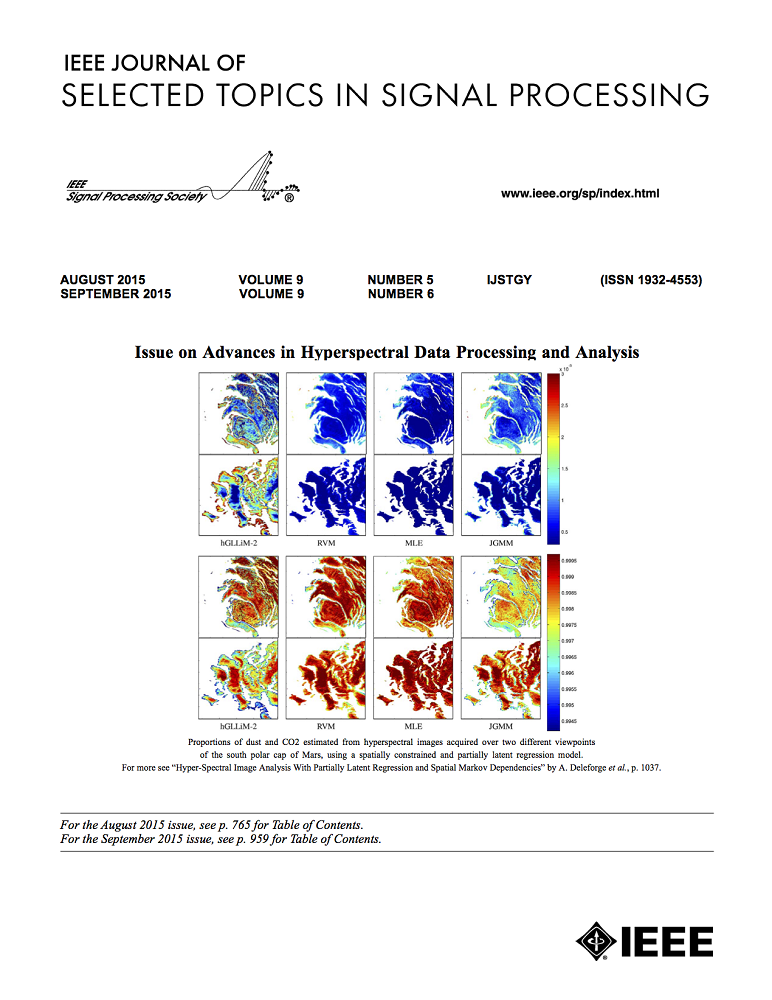Multi-Sources Fusion Learning for Multi-Points NLOS Localization in OFDM System
IF 8.7
1区 工程技术
Q1 ENGINEERING, ELECTRICAL & ELECTRONIC
IEEE Journal of Selected Topics in Signal Processing
Pub Date : 2024-09-06
DOI:10.1109/JSTSP.2024.3453548
引用次数: 0
Abstract
Accurate localization of mobile terminals is a pivotal aspect of integrated sensing and communication systems. Traditional fingerprint-based localization methods, which infer coordinates from channel information within pre-set rectangular areas, often face challenges due to the heterogeneous distribution of fingerprints inherent in non-line-of-sight (NLOS) scenarios, particularly within orthogonal frequency division multiplexing systems. To overcome this limitation, we develop a novel multi-sources information fusion learning framework referred to as the Autosync Multi-Domains NLOS Localization (AMDNLoc). Specifically, AMDNLoc employs a two-stage matched filter fused with a target tracking algorithm and iterative centroid-based clustering to automatically and irregularly segment NLOS regions, ensuring uniform distribution within channel state information across frequency, power, and time-delay domains. Additionally, the framework utilizes a segment-specific linear classifier array, coupled with deep residual network-based feature extraction and fusion, to establish the correlation function between fingerprint features and coordinates within these regions. Simulation results reveal that AMDNLoc achieves an impressive NLOS localization accuracy of 1.46 meters on typical wireless artificial intelligence research datasets and demonstrates significant improvements in interpretability, adaptability, and scalability.OFDM系统中多点NLOS定位的多源融合学习
移动终端的准确定位是集成传感与通信系统的关键环节。传统的基于指纹的定位方法从预先设定的矩形区域内的信道信息推断坐标,由于指纹在非视距(NLOS)场景中固有的异质性分布,特别是在正交频分复用系统中,经常面临挑战。为了克服这一限制,我们开发了一种新的多源信息融合学习框架,称为自动同步多域NLOS定位(AMDNLoc)。具体而言,AMDNLoc采用融合目标跟踪算法和迭代质心聚类的两阶段匹配滤波器,自动和不规则地分割NLOS区域,确保信道状态信息在频率、功率和时延域内均匀分布。此外,该框架利用特定片段的线性分类器阵列,结合基于深度残差网络的特征提取和融合,建立指纹特征与这些区域内坐标之间的相关函数。仿真结果表明,AMDNLoc在典型的无线人工智能研究数据集上实现了令人印象深刻的1.46米的NLOS定位精度,并在可解释性、适应性和可扩展性方面取得了显着进步。
本文章由计算机程序翻译,如有差异,请以英文原文为准。
求助全文
约1分钟内获得全文
求助全文
来源期刊

IEEE Journal of Selected Topics in Signal Processing
工程技术-工程:电子与电气
CiteScore
19.00
自引率
1.30%
发文量
135
审稿时长
3 months
期刊介绍:
The IEEE Journal of Selected Topics in Signal Processing (JSTSP) focuses on the Field of Interest of the IEEE Signal Processing Society, which encompasses the theory and application of various signal processing techniques. These techniques include filtering, coding, transmitting, estimating, detecting, analyzing, recognizing, synthesizing, recording, and reproducing signals using digital or analog devices. The term "signal" covers a wide range of data types, including audio, video, speech, image, communication, geophysical, sonar, radar, medical, musical, and others.
The journal format allows for in-depth exploration of signal processing topics, enabling the Society to cover both established and emerging areas. This includes interdisciplinary fields such as biomedical engineering and language processing, as well as areas not traditionally associated with engineering.
 求助内容:
求助内容: 应助结果提醒方式:
应助结果提醒方式:


